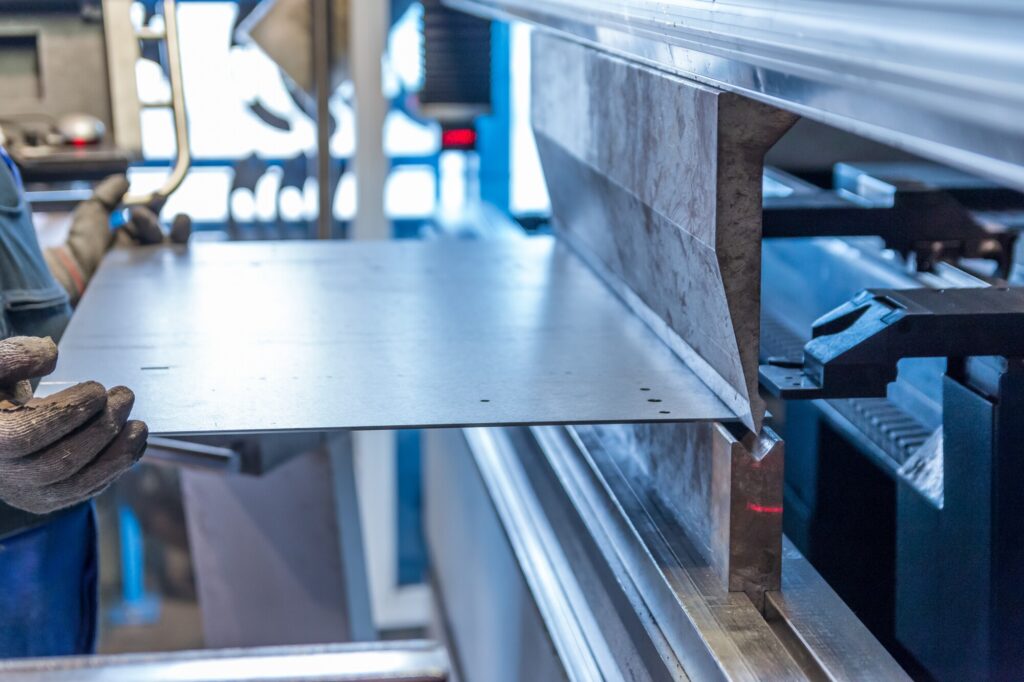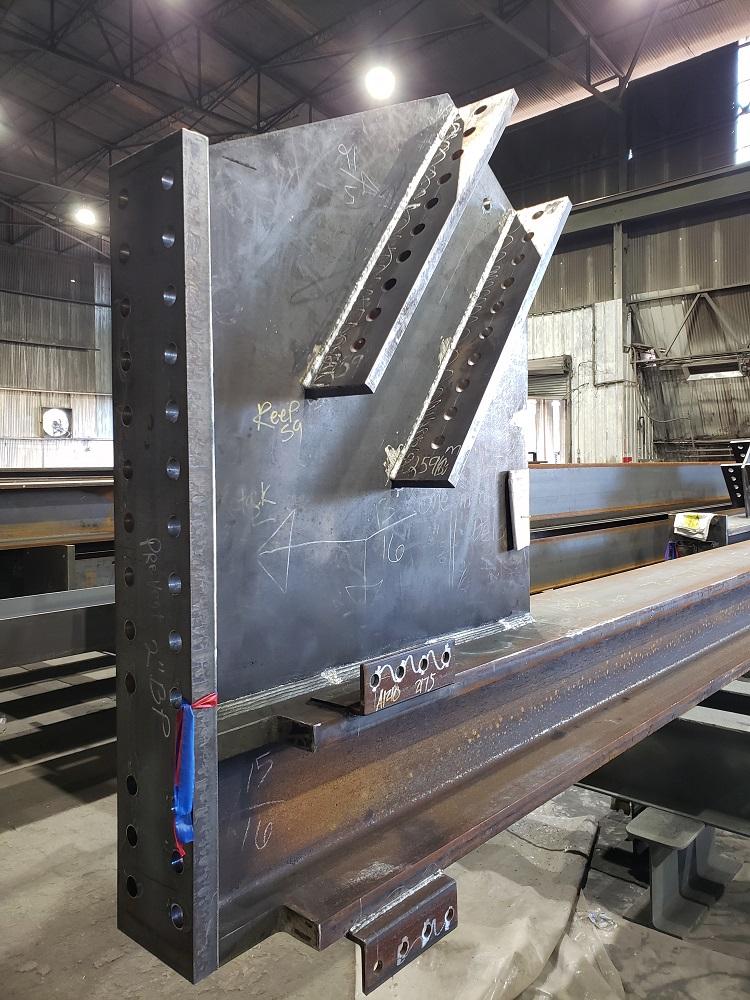Steel Fabrication Melbourne: Workmanship Satisfies Development
Steel Fabrication Melbourne: Workmanship Satisfies Development
Blog Article
Cutting-edge Fads in Steel Manufacture: Enhancing Sturdiness and Accuracy
In the world of steel fabrication, the quest of toughness and accuracy has actually led to a wave of innovative trends that are reshaping the market. These patterns are not simply forming the existing yet additionally laying the groundwork for the future of steel fabrication, guaranteeing additional enhancements in toughness and accuracy.
Advanced Welding Technologies
In the world of steel manufacture, the fostering of cutting-edge welding innovations has dramatically revolutionized the industry's approach to achieving exceptional quality and precision in structural welds. Advanced welding technologies, such as laser beam welding and rubbing mix welding, have actually arised as game-changers in the field. Laser beam of light welding employs a focused laser beam to join steel parts with exceptional precision and speed, making it ideal for elaborate designs and slim products. On the various other hand, friction stir welding develops exceptionally strong bonds by mechanically intermixing the molecules of the products at the joint, eliminating the need for melting the steel. These modern technologies use countless advantages, including reduced heat-affected areas, very little distortion, and improved mechanical residential properties in the welded joints. By leveraging these advanced welding strategies, steel producers can elevate the durability, toughness, and precision of their structural welds, fulfilling the progressively demanding needs of contemporary construction tasks.
Robotic Automation in Manufacture
Embracing robot automation has actually come to be a cornerstone of contemporary steel manufacture practices, enhancing procedures and boosting performance across the market. Robotics are revolutionizing the way steel elements are made, using unrivaled accuracy and rate while decreasing human mistake. These automated systems can handle repeated jobs with regular precision, bring about greater top quality end items.
One secret benefit of robot automation in steel construction is the capability to function all the time without tiredness, significantly increasing production output. This continuous operation minimizes downtime and accelerates project timelines, ultimately conserving prices for suppliers. In addition, robotics can be set to do complex tasks that may be hazardous or tough for human employees, boosting security in the work environment.
Additionally, robot automation enables smooth assimilation with other digital technologies, such as computer-aided style (CAD) software and Internet of Points (IoT) systems (steel fabrication melbourne). This interconnected strategy enhances interaction in between different stages of manufacture, enhancing operations and guaranteeing real-time surveillance and control. As the steel fabrication market remains to advance, robotic automation attracts attention as a transformative force driving efficiency and accuracy in making processes

High-Strength Alloy Advancement
The improvement of high-strength alloy advancement in steel construction is improving the market's technique to improving material longevity and efficiency. High-strength alloys are crafted to display remarkable mechanical buildings, such as raised tensile toughness, durability, and rust resistance compared to conventional steel grades. By incorporating these innovative alloys right into construction processes, makers can create components that withstand greater anxiety levels and harsh environments, bring about even more dependable and durable final product.
One secret benefit of high-strength alloy growth check this site out is the capability to decrease material density without jeopardizing structural honesty. This not just causes lighter-weight elements but also adds to cost savings and find out here now boosted effectiveness in fabrication and assembly procedures. The enhanced strength-to-weight proportion of these alloys allows for the style and construction of frameworks with higher load-bearing abilities while reducing overall weight.
3D Modeling and Simulation Software Program
Innovations in steel fabrication procedures have been significantly propelled by the combination of cutting-edge 3D modeling and simulation software application tools. These devices permit producers to develop detailed digital models of their tasks, enabling them to envision the end product with accuracy prior to any physical job starts. By simulating various anxiety variables, environmental conditions, and architectural lots, makers can optimize designs for improved durability and performance. Furthermore, 3D modeling and simulation software application simplify the manufacturing process by identifying potential problems at an early stage, lowering the demand for costly rework and lessening material waste.

Lasting Practices in Steel Production
Including sustainable techniques into steel manufacturing processes is crucial for reducing ecological impact and making certain long-lasting source availability. One vital sustainable method is the adoption of energy-efficient innovations to lower greenhouse gas discharges throughout the steel manufacturing procedure. This consists of using sustainable power resources, such as solar or wind power, to power steel plants and implementing energy-efficient equipment to maximize energy usage.
One more vital element of lasting steel production is the accountable sourcing of basic materials. This involves ensuring that the iron ore and other resources utilized in steelmaking are gotten from eco pleasant and moral sources. By promoting openness in the supply chain and sticking to stringent environmental requirements, steel makers can decrease the negative impacts of source extraction on local ecological communities and areas.

Conclusion
Finally, the innovative patterns in steel construction such as innovative welding innovations, robotic automation, high-strength alloy advancement, 3D modeling and simulation software program, and sustainable methods are improving the resilience and accuracy of steel items. These improvements are reinventing the steel construction industry by enhancing effectiveness, sustainability, and high quality. It is clear that the future of steel fabrication depends on embracing these sophisticated innovations to fulfill the demands of modern building and production industries.
In the realm of steel construction, the search of resilience and accuracy has actually led to a wave of cutting-edge fads that are improving the sector.In the world of steel construction, the adoption of sophisticated welding modern technologies has significantly changed the sector's technique to achieving exceptional high quality and accuracy in architectural welds. As the steel manufacture sector continues to evolve, robotic automation stands out as a transformative pressure driving efficiency and precision in producing processes.
Additionally, recycling and reusing steel scrap and waste products play a considerable duty in enhancing the sustainability of steel manufacturing. steel fixing.In conclusion, the innovative patterns in steel construction such as sophisticated welding modern technologies, robot automation, high-strength alloy development, 3D modeling and simulation software, and sustainable practices are enhancing the sturdiness and accuracy of steel items
Report this page